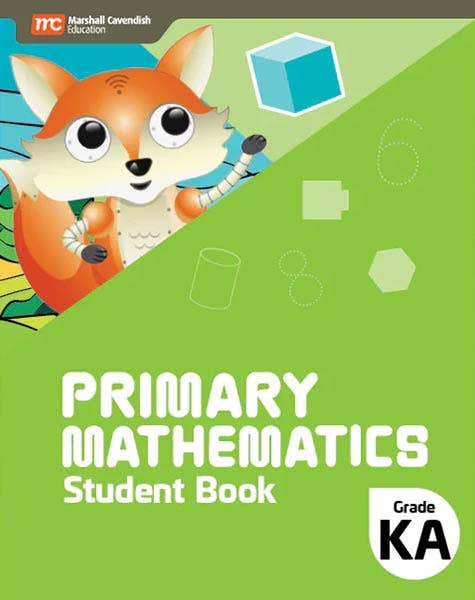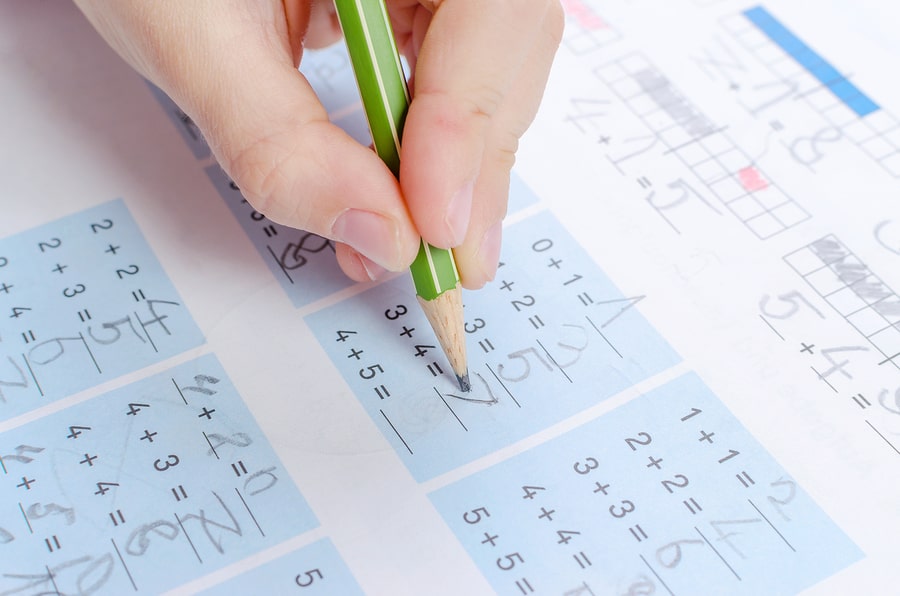Unveiling the Ideal Shortcuts for Addressing Mathematics Issues Quickly
In the domain name of mathematics, performance is essential. Mastering faster ways can transform the means individuals come close to issues. From leveraging the distributive home to employing quick reproduction methods, these strategies improve both speed and precision. Additionally, acknowledging patterns streamlines complicated estimations. As one explores these approaches, they may reveal unexpected understandings that can change their mathematical experience. What are the most reliable techniques that can be quickly incorporated into day-to-day practice?
Grasping Mental Math Techniques
Just how can one enhance their calculation rate without relying on calculators? Grasping psychological math methods supplies a functional solution. By utilizing strategies such as breaking numbers right into smaller, workable parts, people can simplify complicated computations. When including two-digit numbers, rounding each number to the nearest ten can make mental addition easier prior to adjusting back to the original values.
One more efficient strategy is to exercise multiplication tables extensively, allowing fast recall of products (struggles in primary math). Furthermore, recognizing patterns in numbers can assist in quicker computations, such as using the homes of even and strange numbers. Routine method with puzzles and video games can further improve these abilities, making psychological mathematics a lot more user-friendly
Inevitably, growing self-confidence in one's math capabilities permits quicker decision-making and enhances overall mathematical proficiency. By including these strategies, anyone can greatly improve their estimation rate.
Using the Distributive Property
The Distributive Property is a fundamental concept in mathematics that streamlines computations by allowing reproduction throughout addition or reduction. It is crucial for pupils to comprehend its application through sensible instances, which can enhance their analytic skills. Additionally, identifying typical mistakes can better solidify their understanding and prevent mistakes in future computations.
Understanding the Distributive Property
Understanding the distributive residential property can significantly streamline mathematical computations. This basic home states that when increasing a single term by an amount or distinction, one can disperse the reproduction throughout each term within the parentheses. For instance, in the expression a(b + c), one can reword it as abdominal + air conditioner. This technique not only enhances calculations however additionally enhances understanding of how numbers engage (struggles in primary math). The distributive home is specifically useful in algebra, where it helps in streamlining expressions and solving equations. In addition, it lays the groundwork for extra intricate ideas, such as factoring and polynomial operations. By realizing the distributive residential property, pupils can develop a strong structure for dealing with a large variety of mathematical difficulties effectively
Practical Instances Illustrated
Why is it essential to use the distributive property in sensible scenarios? The distributive residential or commercial property enables people to simplify intricate computations, making analytic more reliable. As an example, when computing the total cost of numerous items, one can utilize the expression 5(2 + 3) to find the complete expense of five things valued at $2 and $3. By dispersing, the computation ends up being 5 × 2 + 5 × 3, producing a quicker outcome of $25. An additional example is in algebra, where streamlining expressions like 3(x + 4) can be achieved through distribution, leading to 3x + 12. Such applications highlight the effectiveness of this residential property in various real-world situations, boosting both rate and accuracy in mathematical problem-solving.
Typical Errors to Stay Clear Of
Although the distributive residential or commercial property is an effective device in mathematics, common errors can cause wrong results. When pupils neglect to distribute the coefficient to each term within parentheses, one constant mistake occurs. For instance, in the expression 3(x + 4), stopping working to use the residential property properly can lead to omitting the reproduction, producing a wrong solution. One more mistake entails defalcating the home by including as opposed to increasing, especially when unfavorable signs are included. In addition, students might neglect to simplify the last result, which can odd mistakes made during distribution. Identifying and avoiding these mistakes can boost analytic efficiency and accuracy when utilizing the distributive property in various mathematical contexts.
Quick Reproduction Shortcuts
In the domain name of fast multiplication shortcuts, methods like increasing by powers of 10 and the increasing and halving method stick out. These strategies can significantly simplify computations, making them extra accessible. Understanding these shortcuts can boost performance in mathematical problem-solving.
Multiplying by Powers of 10
When multiplying by powers of 10, the process becomes remarkably simple, as the operation primarily involves moving the decimal point. As an example, multiplying a number by 10 requires moving the decimal one place to the right, while multiplying by 100 necessitates a shift of two places. This simpleness encompasses larger powers, where each additional zero indicates an additional decimal change. Multiplying 5.6 by 1,000 results in 5,600. This method greatly boosts rate and precision, as people can quickly envision the outcome without complicated calculations. Such efficiency is specifically valuable in psychological math or when time is restricted, allowing for quick analytical in various mathematical contexts. Mastering this strategy is essential for anybody intending to enhance their arithmetic abilities.
Doubling and Cutting In Half Approach
The Doubling and Cutting in half Approach offers an effective approach for fast multiplication, specifically when taking care of even numbers. This technique entails transforming a reproduction issue into a less complex form by either increasing one of the numbers and cutting in half the other. For instance, to compute 16 × 25, one can halve 16 to obtain 8 and double 25 to obtain 50, resulting in 8 × 50, which equates to 400. This technique simplifies computations, making them more manageable. It is specifically helpful in psychological math, permitting individuals to resolve problems promptly and precisely. By leveraging this strategy, trainees and specialists can boost their numerical dexterity, therefore enhancing total efficiency in mathematical jobs

Effective Department Approaches
Division typically positions challenges for many students, using effective methods can significantly simplify the process. One reliable approach is making use of compatible numbers, which involves rounding the divisor and reward to much easier values that are close to the original numbers. This strategy makes psychological computations more manageable. An additional technique is the estimation strategy, where learners can find a harsh response before performing the specific division, providing a valuable criteria for accuracy.
In addition, the long department method remains a staple for separating larger numbers. By damaging the process right into smaller sized, more absorbable steps, learners can keep clearness. The duplicated subtraction approach can also be practical, particularly for those who fight with even more abstract principles. By systematically deducting the divisor from the returns, individuals can picture the process. see this here Overall, these techniques can pop over to this site enhance department abilities, leading to quicker and extra exact analytic abilities.
Rapid Enhancement and Subtraction Techniques
Just how can students boost their speed and accuracy furthermore and subtraction? One reliable approach is to make use of mental mathematics approaches, such as breaking numbers into smaller sized, more manageable parts. For example, when adding 47 and 36, one can first include 40 and 30 to obtain 70, after that add the remaining 7 and 6 to come to 83. This method simplifies computations and decreases errors.
One more method involves utilizing the number line for aesthetic learners, helping them to see the relationships in between numbers and improve their understanding. In addition, exercising with devices like flashcards can strengthen quick recall of basic sums and differences.
Learners can profit from acquainting themselves with benchmark numbers, such as rounding to the nearby ten, which allows for quicker evaluations. By including these methods into their practice, learners can considerably improve their rate and precision in standard math procedures.
Leveraging Estimation for Quick Calculations
Estimate acts as a powerful tool for boosting calculation rate, complementing psychological mathematics approaches properly. By rounding numbers to their nearest entire worths, individuals can streamline intricate computations, making it easier to get to an approximate result swiftly. When faced with a trouble like 198 + 267, rounding to 200 + 270 yields a quick quote of 470, enabling the solver to examine the precision of the final answer.
Estimate is particularly helpful in circumstances entailing reproduction and department. By rounding elements to easier numbers, one can promptly gauge approximate items or ratios. This strategy not only conserves time but also aids in identifying potential errors in calculations.
Recognizing Patterns and Formulas
Patterns and formulas are crucial tools in maths that allow individuals to solve issues a lot more successfully. visit this website Identifying these patterns allows learners to recognize connections between principles and numbers, which can streamline intricate calculations. Acknowledging the square formula (ax ^ 2 + bx + c = 0) promotes quick solutions to various equations.
Patterns in series, such as math or geometric developments, help people predict future terms without considerable estimations. Formulas, on the various other hand, offer as faster ways, permitting faster analytical by enveloping complicated relationships right into convenient expressions.
Frequently Asked Inquiries
Exactly How Can I Improve My Emphasis While Resolving Mathematics Troubles Promptly?
To boost emphasis while solving math problems swiftly, one can get rid of distractions, set certain objectives, technique mindfulness strategies, take regular breaks, and maintain a constant research regimen to enhance focus and psychological clearness.
What Tools or Applications Help With Quick Mathematics Problem-Solving?
Various tools and apps, such as Photomath, Microsoft Math Solver, and Desmos, boost fast mathematics analytical. These resources use step-by-step services, graphing capabilities, and instant responses, making them useful for professionals and trainees alike.
Are There Particular Math Shortcuts for Standard Examinations?
Yes, details mathematics shortcuts for standardized examinations consist of strategies like evaluation, understanding number homes, utilizing the procedure of removal, and grasping typical formulas. These techniques enhance rate and accuracy, boosting overall examination efficiency.

Exactly how Do I Exercise Mathematics Shortcuts Effectively?
To exercise mathematics shortcuts efficiently, individuals should regularly resolve diverse problems, utilize on-line resources, and participate in timed drills. Uniformity and representation on blunders boost understanding, eventually bring about enhanced rate and precision in computations.
Can Shortcuts Be Applied to Intricate Math Problems?
Faster ways can undoubtedly be applied to complex mathematics issues, although their efficiency varies. Mastery of foundational ideas and calculated reasoning allows individuals to simplify procedures, making it simpler to tackle elaborate computations successfully.
By using techniques such as breaking numbers into smaller sized, manageable components, individuals can streamline complicated computations. Additionally, identifying patterns in numbers can promote quicker calculations, such as utilizing the residential or commercial properties of also and odd numbers. Estimate serves as a powerful tool for enhancing calculation speed, enhancing mental mathematics methods efficiently. By rounding numbers to their local entire values, individuals can streamline intricate calculations, making it easier to arrive at an approximate result rapidly. Identifying these patterns enables students to determine relationships between principles and numbers, which can streamline complicated computations.